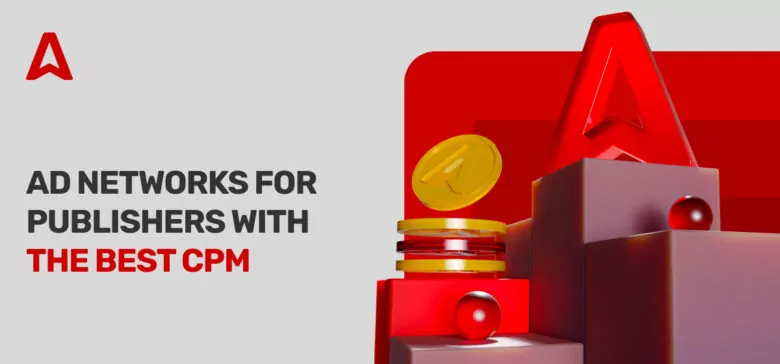Ready? We’ll let you in on the biggest secret that most ratings keep avoiding. You can find fixed CPM rates on the market, but cost per mille is a dynamic metric in most cases. That means: you should choose the best CPM network for publishers based on the ad network’s reliability and not its average rate. Trustworthy, biggest ad networks always outline their terms and conditions for publishers to make everything clear from the start.
We’ve researched and collected some facts and figures to help you make your choice informed and increase revenue.
Best CPM ad networks for publishers
To cut it short, CPM stands for cost-per-mille aka cost per 1,000 ad impressions. In its turn, a CPM ad network is an online advertising platform where businesses and websites can sell ad inventory and purchase ad space, using the CPM model.
Best CPM advertising network for publishers serves as perfect intermediaries between advertisers, who are looking to reach their target audience, and publishers, who are looking to monetize their web traffic.
Before settling for the highest paying ad network, keep in mind that CPM is very volatile. It depends on traffic quality, seasonality, GEO, and many other factors. You can’t say that one or another ad network will always pay you the highest, unless you work hard to grow traffic volumes and its quality.
Expert tip
Traffic tends to be volatile, but if you know how to manage it, for example, quickly build up the volume of ad impressions from a certain GEO, you can increase revenue rapidly. For such publishers, we have an updated selection of GEOs and parameters with the highest payouts.
What exactly is CPM / eCPM and how does it differ from CPC or CPA?
Now in detail what is good CPM … . CPM is a pricing method used in advertising. It helps calculate how much you earn per thousand ad impressions on your website.
However, this metric isn’t very practical for publishers. When one views their CPM, they are looking at the average cost they receive for every 1,000 ad views. Nevertheless, the exact price of each advertisement can differ greatly in some cases. That’s why publishers should rely more on eCPM.
Expert tip
Effective cost per thousand impressions (eCPM) takes into account both the number of impressions and the ad revenue generated from those impressions. As a result, it provides a more accurate picture of the actual profitability of an ad campaign.
Many advertisers take into account the number of conversions, paying higher for traffic that has the best conversion rate. That’s why publishers should count eCPM as it reveals the real income from ads, not only the current CPM rate. With Adsterra, you can easily check your eCPM from your publisher’s account. If you want to gain a better understanding of eCPM, check our previous article:
Now, what about CPC and CPA? It’s pretty straightforward. These are online advertising payment models, just like CPM. CPC charges per click, emphasizing engagement. CPA charges per completed action (like a signup or purchase), focusing on conversions.
How does CPM work?
An impression is defined when a web page or advertisement is loaded in the browser, and one user viewing the page or ad is counted as one impression.
When an ad is served, the advertiser pays for every 1,000 impressions it receives. This pricing model works well for advertisers and marketers as it allows them to control the cost of their campaigns. And at the same time, it allows publishers to monetize their content by charging for their ad space.
How do top CPM ad networks calculate CPM?
This is the standard formula for calculating a publisher’s CPM that top ad networks for publishers use:
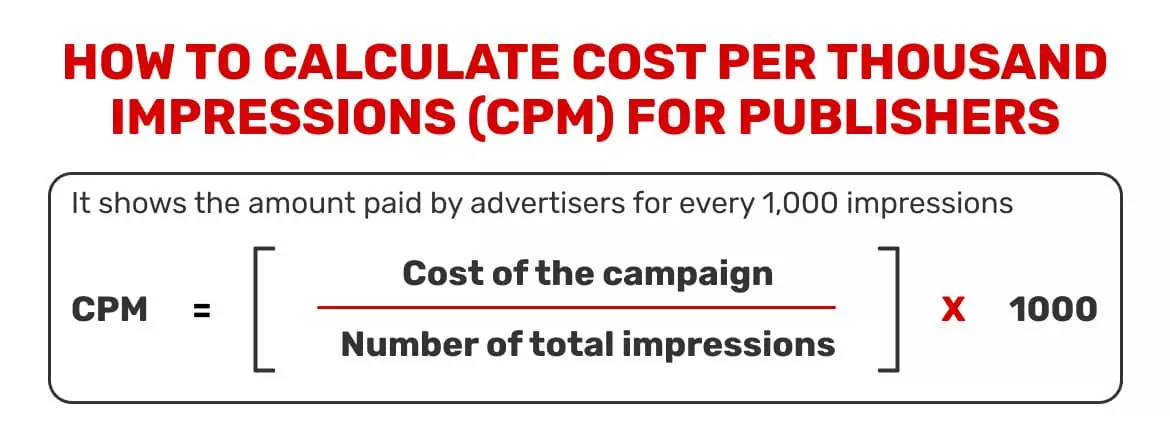
CPM isn’t typically used in isolation. It is usually combined with other metrics to get a better understanding of the overall profitability of a campaign.
Industry standards for recording impressions
The MRC (in collaboration with the IAB Emerging Innovations Task Force) published the Viewable Ad Impression Measurement Guidelines in June 2014. This guideline defined an ad as “viewable” if at least 50% of its pixels were visible on the in-focus browser tab for at least one second (image & text ads) and two seconds (for video ads).
October 2017: The MRC/IAB/MMA/MMTF released updated impression-based guidelines across desktop display, mobile web, and mobile application (in-app) environments, formalizing “begin to render” display ad impression measurement criteria.
When searching for the best CPM ad network for publishers, you should find out how they count impressions. Transparency is the key to profitability, and since you’re here, you can find out everything about How Adsterra Counts 1000 Impressions: CPM for Publishers Explained.
Where to find the best-paid traffic with the highest rates?
The CPM advertising package benefits publishers by allowing them to maximize revenue by simply placing ads on their sites. This way, users don’t have to interact specifically with the ads for publishers to earn.
The other advantage CPM ads have is constantly rising ad revenue. CPM advertising offers publishers a steady source of income that generally increases over time as the website’s traffic grows.
Essential criteria for evaluating best CPM ad networks meant for publishers
Consider these key criteria when evaluating best-paying CPM ad networks:
- Ease of moderation and ad setups. A simple onboarding process gives you less stress and quicker turnaround times.
- Stable CPM rate and fill rate. Average earnings per 1,000 impressions and how consistently high-quality ads are served.
- Traffic requirements. Minimum visit entry limit (like with some premium ad networks), GEO restrictions, and content policies.
- Ad formats, ad layout optimization, and templates. Display, native, video, push, or popunder ads and their impact on user experience.
- Payment terms and transparency. Payout frequency, low minimum payment threshold, and variety of payment methods.
- Ad quality and relevance. Brand safety, targeting options, and niche relevance.
- Analytics dashboard, ad stack, support. Transparent reporting, ad optimization tools, and responsive publisher support to help optimize ads accordingly.
- Ad blockers management. The feature helps increase revenue up to 35% by introducing anti-Ad Blockers.
Expert tip
Never settle for fewer capabilities from your CPM ad network as a publisher. Research the market, test and make conclusions.
Unlike some other ad networks, Adsterra is flexible, niche-focused, global platform, it can provide rapid speed approval of your website and onboarding. It has a huge pool of advertisers (15K+) that will compete to show their high-quality ads on your site. You can enjoy 1.6B conversions and 220K+ new ad campaigns added to the ongoing ones per year.
Most importantly, you can put the industry-highest-CTR ad inventory, like Social Bar, Smartlink (Direct link) that is laser-fit to your audience interests, as well as evergreen traditional methods like Popunder and Native Banners.
You have live, ongoing Partner Care Team support for expert advice, help with ad setups, and analytics data. You can join best paying CPM ad networks for publishers and advertisers today without traffic limit requirements for your website.
Factors affecting CPM on top of ad network choice
Let’s discuss the factors affecting CPM rates that go on top of your choice of the best CPM ad network operating for publishers.
WEBSITE PROFILE
- Website niche (like a movie site),
- Keywords / search intent,
- SERP position,
- Traffic volume,
- Download speed,
- Mobile-friendly UI.
ON-PAGE SEO & UX
- Ad viewability,
- Ad density (quantity),
- CTR (click-through-rate),
- Ad format,
- Ad frequency,
- Page navigation.
TRAFFIC/USERS
- GEO Device, OS, Browser,
- Ad format,
- New VS active users,
- Session duration,
- Engagement (clicks & conversions).
AGENDA & TRENDS
- Recurrent events,
- Seasonality,
- Competition,
- Advertisers’ budgets,
- Quarterly buying cycle,
- Force majeure.
First, there are factors that publishers cannot control but can anticipate and prepare for accordingly.
2. GEO & Location
CPM rates correlate with the GDP of the country where content is served. Advertisers are less likely to bid for impressions in countries with lower consumer spending power, i.e., tier-3 GEOs.
Also, rates differ depending on how advanced the local online advertising industry, so CPM rates in English-speaking countries are considerably higher.
3. Seasons
CPM rates are heavily influenced by the date and time your ads are scheduled to run. Most publishers know that demand will be lower in January as advertisers round up their budgets and holiday campaigns.
Anything that boosts consumer spending, such as holidays, sporting events, or Black Friday, will drive up CPM rates.
Expert tip
Seasonal changes can also be potential reasons why your CPM can drop. Also keep in mind other reasons like changes in your target audience, low user engagement, or low competition for traffic.
4. Device type
The more information you have about a user, the more effective your ad campaign is. Even though mobile has surpassed desktop traffic, desktop CPMs are higher due to their higher conversion rates. Mobile device type also affects the rates. Advertisers are often willing to pay more for iOS and Mac impressions.
We all know that Apple phones are expensive, i.e., Apple users are more likely to have disposable income. In addition, some online products are only available on specific devices, so advertisers tend to pay more just to reach a target audience. Besides audience demographics, ad serving techniques can significantly impact CPMs.
Interesting read: How to Deal With Low CPM. A Publisher’s Checklist.
5. Placements
The higher your ad’s CPM rate, the more impressions it will have. This means that CPMs are highest in content-rich, center-of-the-page ads and banners just below the fold. To generate the highest CPM for your ad spaces, you test, gather analytics and apply ad optimization.
6. Ad format
Your ad format naturally hints ad placement where it can be displayed for users. Video ad formats typically require so much of the user’s attention. Therefore, they have higher CPM rates. Not many readers are willing to watch a video ad in the middle of reading an article. The opposite is fair for Native Banners: users willingly interact with them while reading blog posts and articles.

Interactive ads
Interactive ads help capture user attention for a fraction of a second it takes to register a viewable impression, resulting in a higher CTR. More complex formats, like the customizable In-Page Push or Social Bar, can draw higher CPMs for these reasons.
Let’s talk about the growing popularity of Interstitial ads. These are full-screen ads that are easy to close on mobile and desktop. Publishers especially love them because they’re not annoying like pop-ups and bring high CTR, which means the CPM can increase, too.
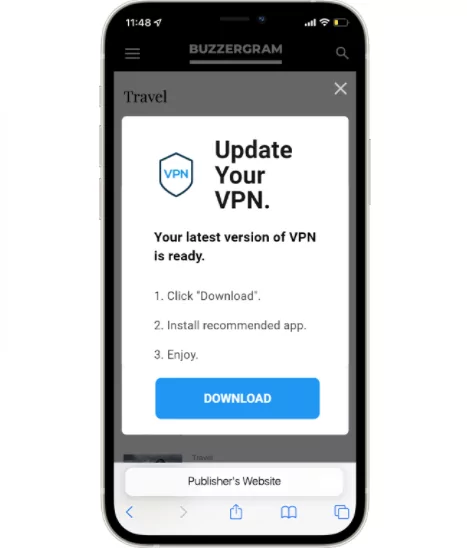
7. Ad viewability
An ad is viewable when at least 50% of the ad’s pixels are in the viewport for a second or more. Users must be engaged with the page rather than just scrolling through it for this to happen. Publishers with low ad viewability scores have a hard time attracting high CPMs. The biggest ad networks pay publishers offering campaigns where advertisers pay for verified, viewable impressions.
Offering 100% viewability leads to a significant rise in CPM rates, but it can take publishers a long time to register such impressions. Users scroll slowly on pages with a lot of content, so placing ads at the bottom of the first viewport ensures that they will be visible for the entire time a user spends reading a screen’s worth of content.
8. User information
The more information advertisers have about their target audience, the more likely they’ll convert them. The more information your audience leaves behind, whether through cookies or first-party data, the higher CPMs you’ll be able to demand.
For example, suppose you show an advertiser that your audience is passionate about technology, has seen content related to their product and is in their target market. In that case, advertisers will compete to reach this audience.
9. Buyer’s journey
People rarely purchase something online the first time they see it. This means that before converting, users will consult multiple sources, read reviews, and weigh professional advice. Advertisers will be willing to pay higher CPMs for impressions at this stage if the user is down the conversion funnel process, such as checking reviews.
Here you can see how the article provides advertisers with impressions from a specific audience when they are ready to buy. Because of the competition from relevant advertisers, CPMs for this content will be much higher.
10. Amount of ad units
The right ad networks work so that they accommodate your website with just enough ad placement and units. However, you can increase CPMs by reducing the number of ad units while maintaining a well-unified experience — then, you only have a few buyers. To find the optimum range between CPM and the number of ads, test, and experiment using ARPU to see how any changes will affect your bottom line. It is worth learning how to combine advertising formats so you can diversify your ad revenues without annoying users.
11. Brand safety
Brand safety refers to two things for advertisers: ensuring that their ads are not subject to ad fraud (bot clicks or content replacement) and that their ads do not appear next to offensive content.
According to Integral Ad Science, advertisers who do not filter for fraud lose as much as 22% of their impressions to invalid traffic. Then there’s the matter of the adverse news. Brands don’t want their ads to get lost in a mix of bad news.
Some advertisers offer higher rates for Quality Cost Per Mile to ensure brand safety. Only viewable, brand-safe impressions are counted by QCPM, and impressions are frequency-capped to prevent them from appearing too often. This is an excellent illustration of how a low CPM does not always mean a good deal for advertisers. A page crammed with low-value, low-quality ad placements is always worse for the user experience. The publisher’s ad revenue is lower than one with fewer, higher-quality, high-CPM ads.
Top 15 highest-paying CPM ad networks for publisher
Here is a list of different ad networks that will help you to dive much deeper and choose the right ad network for your online business.
Criteo

Criteo helps you achieve high fill rates and get matched with top advertisers. Their technology solutions match the highest CPMs with your high-quality content, provided that you send over 100,000 page views per month. Simplify your ad server setup and get more ad revenue from Criteo’s high-quality roster of over 15,000 advertisers worldwide.
Criteo has a global network of 21,000+ servers responding to over 120 billion requests per day in milliseconds, allowing you to reach customers no matter where they are. There are no hidden costs or ambiguous bidding mechanisms. You can eliminate third-party fees and keep the full value of Criteo-purchased standard display ads, native ads, and even ad-blocked inventory.
Features
- Requirements: 100,000 page views per month;
- Tracking campaign results;
- Custom banners;
- Mobile, social, and desktop support;
- Minimum payment: $150;
- Payment methods: PayPal, Check, and Wire Transfer;
- Payment Frequency: First week of the month;
- Ad Monetization Options: CPC, CPM;
- Support Email: No Support.
Adsterra
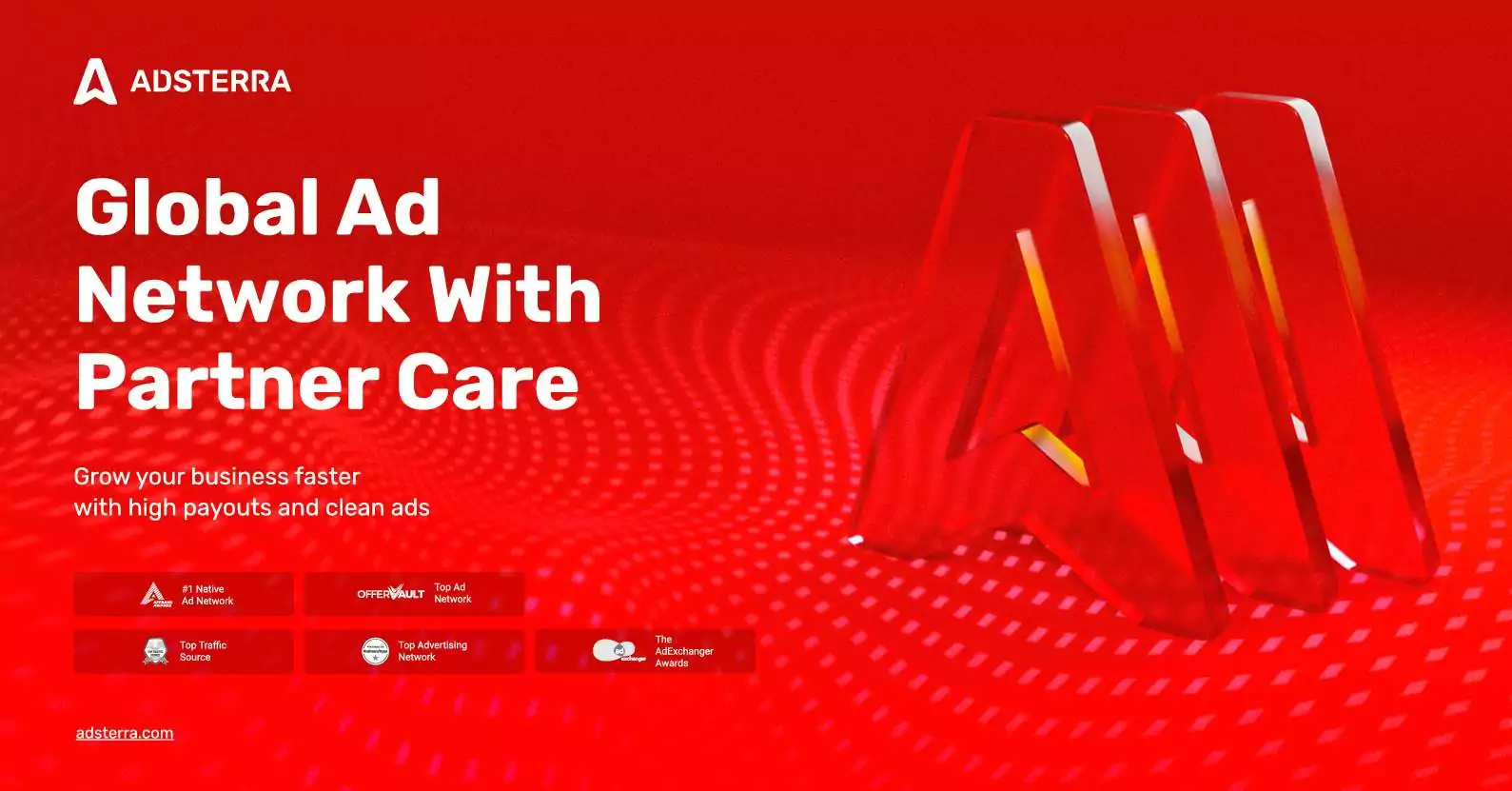
Adsterra is one of the highest-paying CPM ad networks for publishers that pay for impressions. The top ad networks for publishers and webmasters set no entry limits to traffic volumes. Adsterra is famous for its Partner Care approach and has been praised many times on Trustpilot and other rating agencies.
Key figures and facts about Adsterra:
- 35B+ impressions monthly;
- 15K+ direct advertisers with 1.6BN conversions per year;
- 36K trusted publishers;
- 248 GEOs;
- High CPM ads network;
- Live chat support for all partners.
Core benefits for publishers
- Fast website approval. Being a competitive AdSense alternative, Adsterra offers prompt approval soon after you register;
- Payment methods: Wire Transfer, Paxum, PayPal and other most-used platforms, including cyber money, Local Direct Bank Transfer;
- Payment Frequency: Automated payouts (NET-15);
- Minimum payment threshold: $5 (e.g., for Paxum);
- Multiple ad formats for monetization: Popunder, Social Bar (or In-Page Push ads), Native Ads, Display Banners, Smartlinks (also called Direct Links), and Interstitial ads;
- Partner Care program: Expert managers and support team;
- Extra Income Referral Program: You earn an additional 5% from each referral;
- Anti-malware protection: Robust in-house and third-party security solutions.
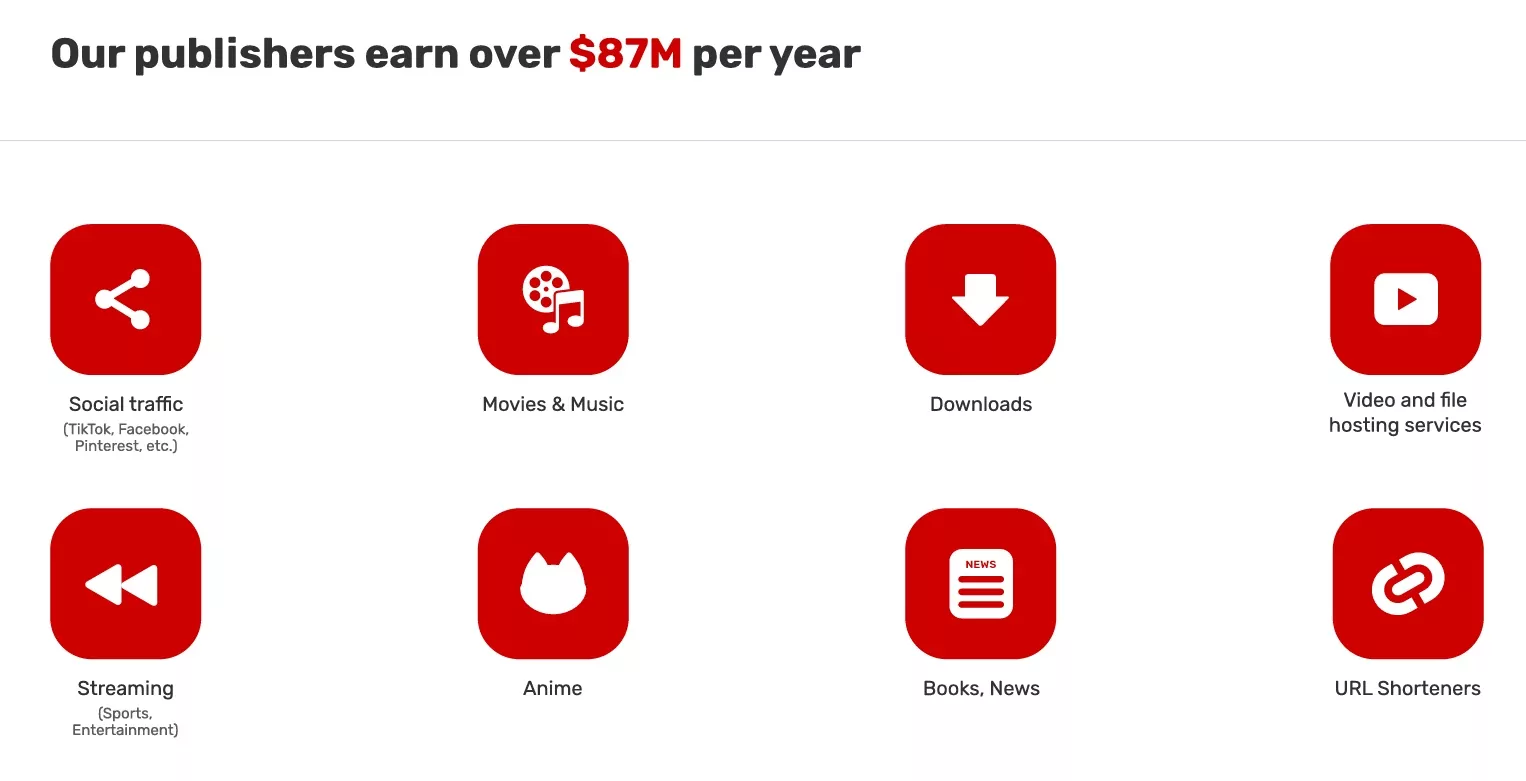
PopMyAds
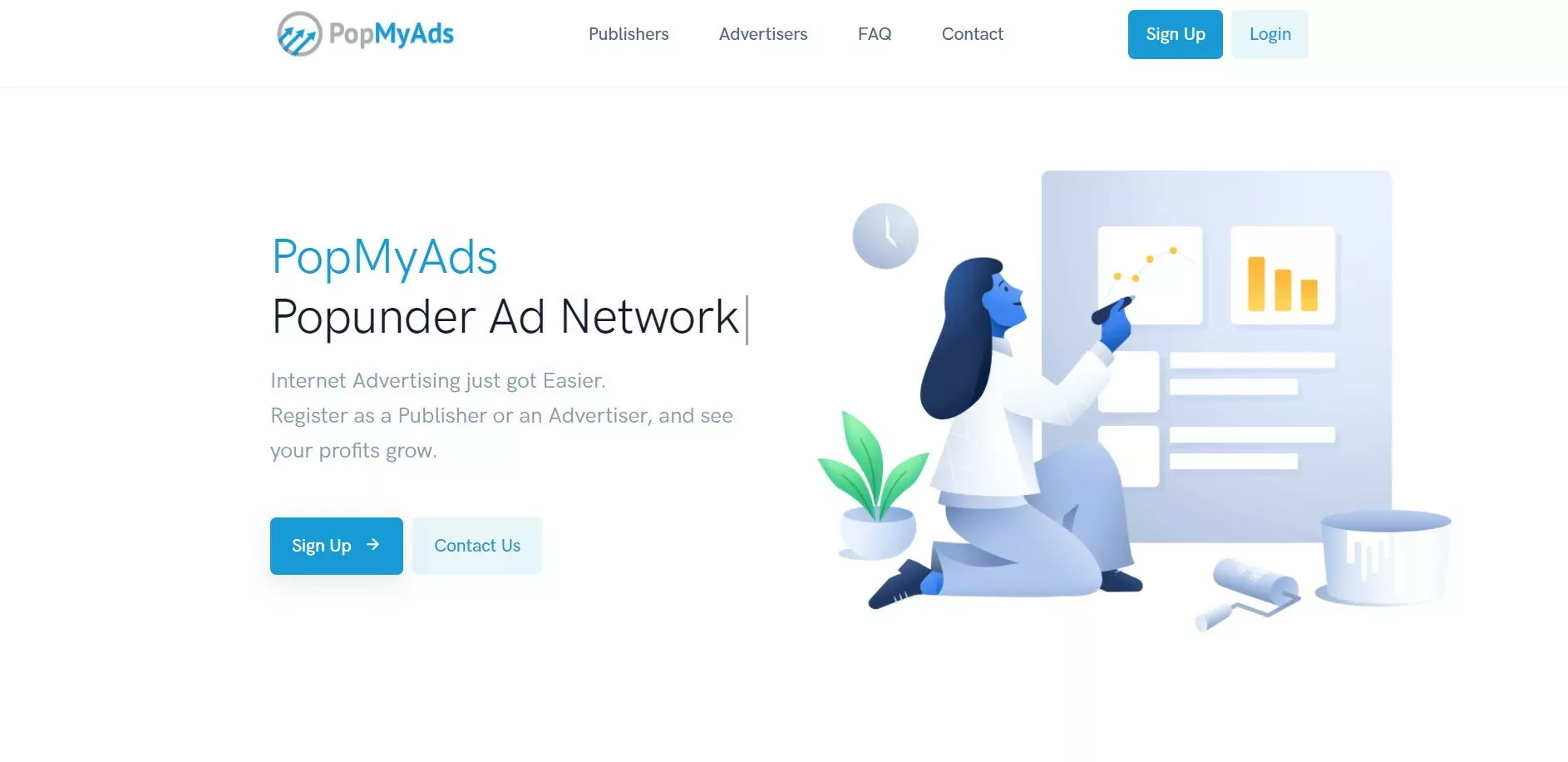
A huge pop-under ad network with over 300 million monthly visitors. Their CPM rates vary according to website niche, audience country, and geographical factors. PopMyAds offers great ratios for impressions, a good revenue CPM program, and an innovative anti-fraud system that filters out bad traffic.
Core features
- Payment methods: Paypal, Payza, Wire transfer;
- Minimum withdrawal: $5;
- Wire transfer – minimal withdrawal is $500;
- Ad formats: Pop-up and pop-under ads;
- Customer support: 24/7 clients’ support;
- Payment frequency: Upon publisher’s request.
Hilltopad

Hilltopad offers various high-converting ad units that are tailored to your website and device to monetize your traffic. Choose from a variety of formats such as pop ads, banner ads, in-video ads, native ads, and more.
Core features
- Minimum payment: $50;
- Payment methods;
- Payment regularity: Net 7 days;
- Monetization options: CPM, CPA and CPC;
- Requirements: 5,000 unique Page Views Per Day;
- Support Email: 24/7 qualified support;
- Advertising formats: Push notifications, display and video ads, native ads, pop up ads.
VDX.tv
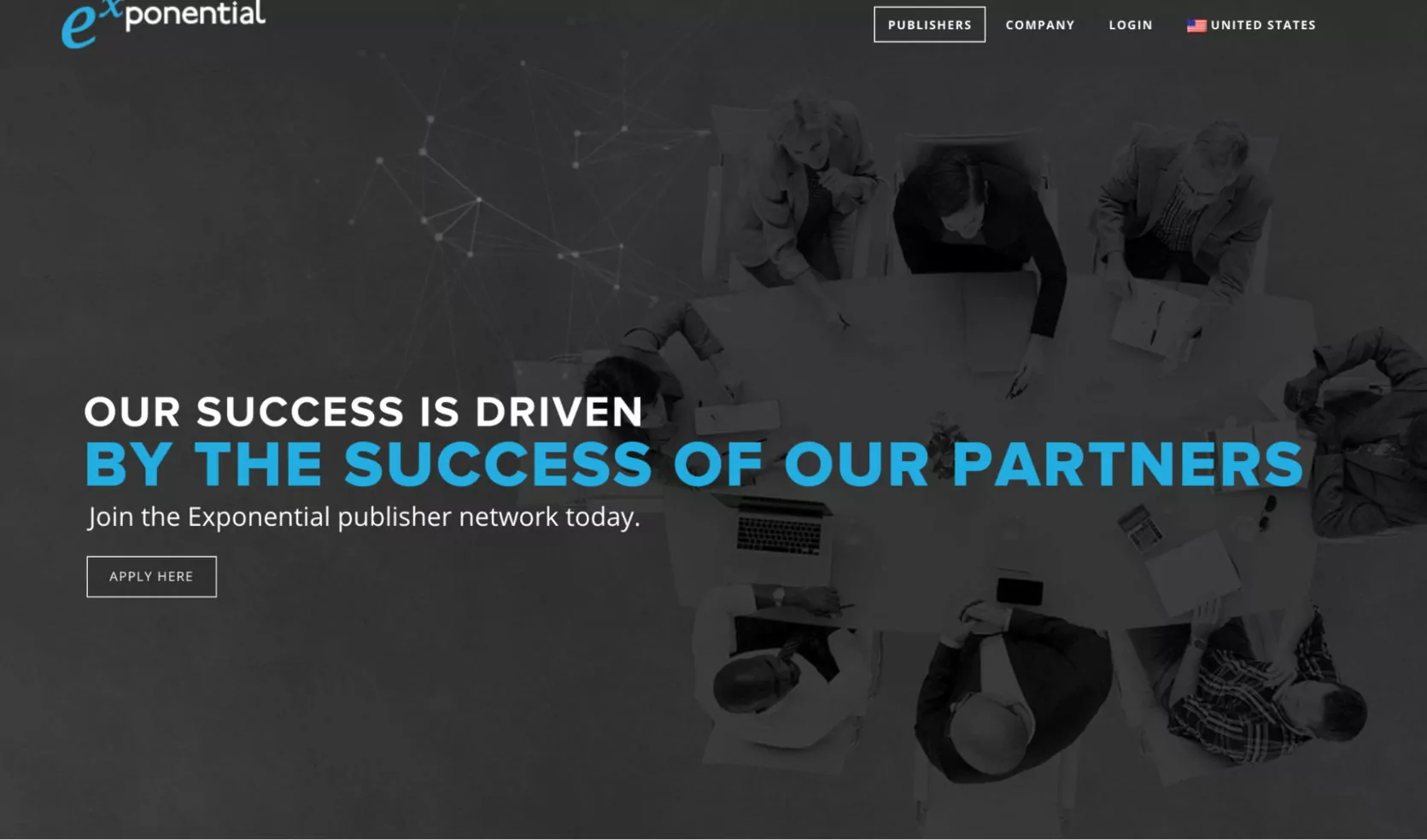
VDX offers website-friendly ad formats that improve user experience. It selects publishers by setting up the entry to 500K monthly pageviews. VDX allows website visitors to choose among various ad formats such as in-stream, display, and mobile. They offer satisfactory CPM, while publishers can earn 55 percent of their ad serving ad revenue after registration.
Core features
- Variety of ad formats: mobile ads, ads for in-app, desktop, and table (pre-rolls and rising stars);
- Context-friendly targeted ads adapt easily to inventory design;
- Generates real-time performance statistics via custom reports for global advertisers in top countries like the USA and United Kingdom.
- Minimum payment: $50;
- Payment regularity: Net 45 days;
- Payment methods: PayPal and bank check;
- Requirements: 500,000 monthly pageviews.
Revcontent

Revcontent is a native ad platform for top publishers that pays every 30 days with a $50 minimum withdrawal. You can monetize by implementing header bidding and serving native ads for mobile apps. It has an audience insight feature for improving CTR and ad revenue. Also, publishers can design their sponsored content feed using a customizable widget.
Core features
- Minimum payment: $50;
- Payment regularity: Net 30 days;
- Monetization options: CPC and CPM;
- Requirements: 50,000 pageviews per month;
- Support Email: No support;
- Monetization solutions exist for both desktop and mobile apps;
- Ad inventory: In-feed, In-article, and Recommended Widgets.
Amazon Publisher Services
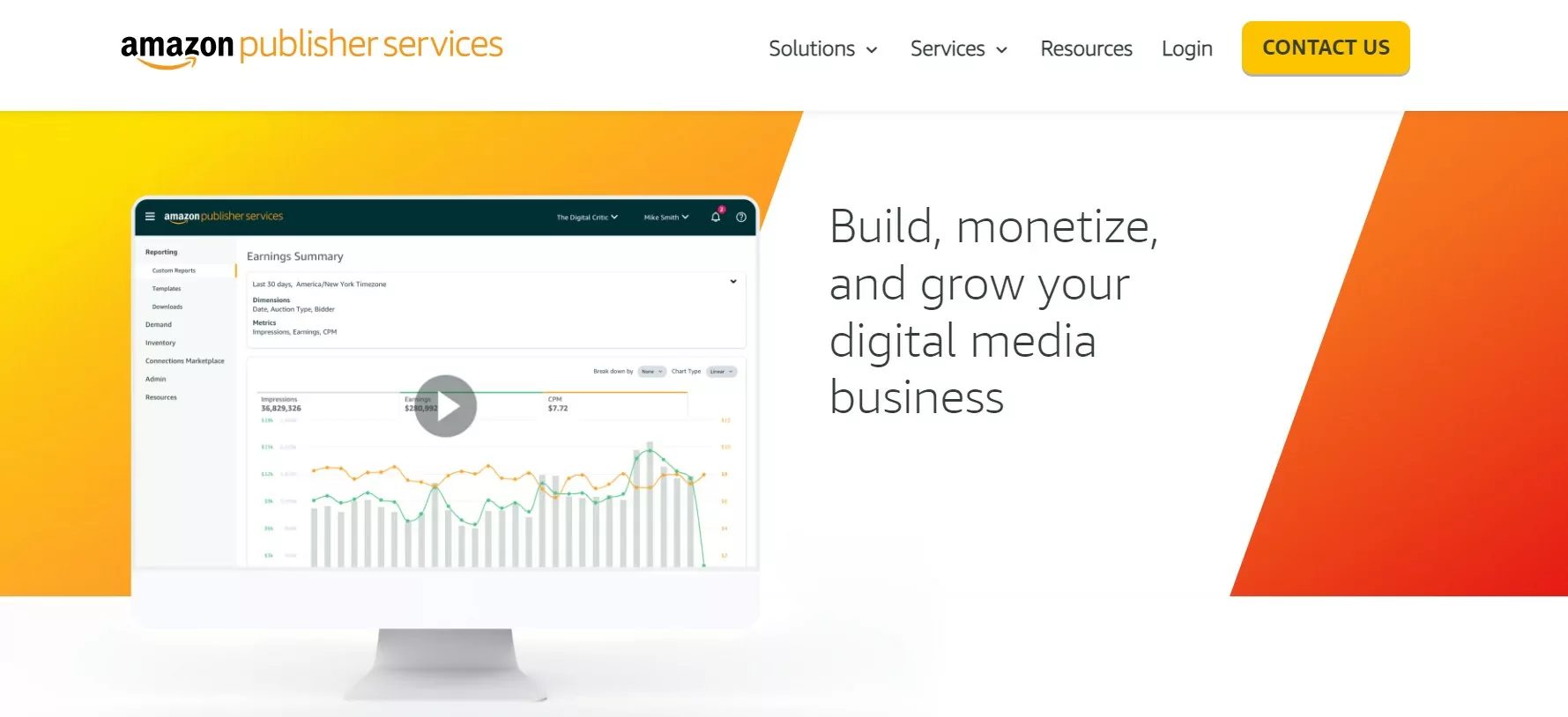
Amazon Publisher Services is a prominent CPM advertising network. It connects publishers with high-quality advertisers in the e-commerce industry. This platform is one of the most highest paying CPM ad networks, but Amazon is quite picky about publishers allowed to join it. Publishers with small traffic have slim chances of joining; it’s best suited for mid-size or large publishers with sizeable traffic.
Core features
- Payment terms: Net 60;
- Payment methods: Check, wire transfer, and electronic funds transfer (EFT);
- Various ad formats: Banner ads, Display and Video ads, Native, etc.
BuySellAds
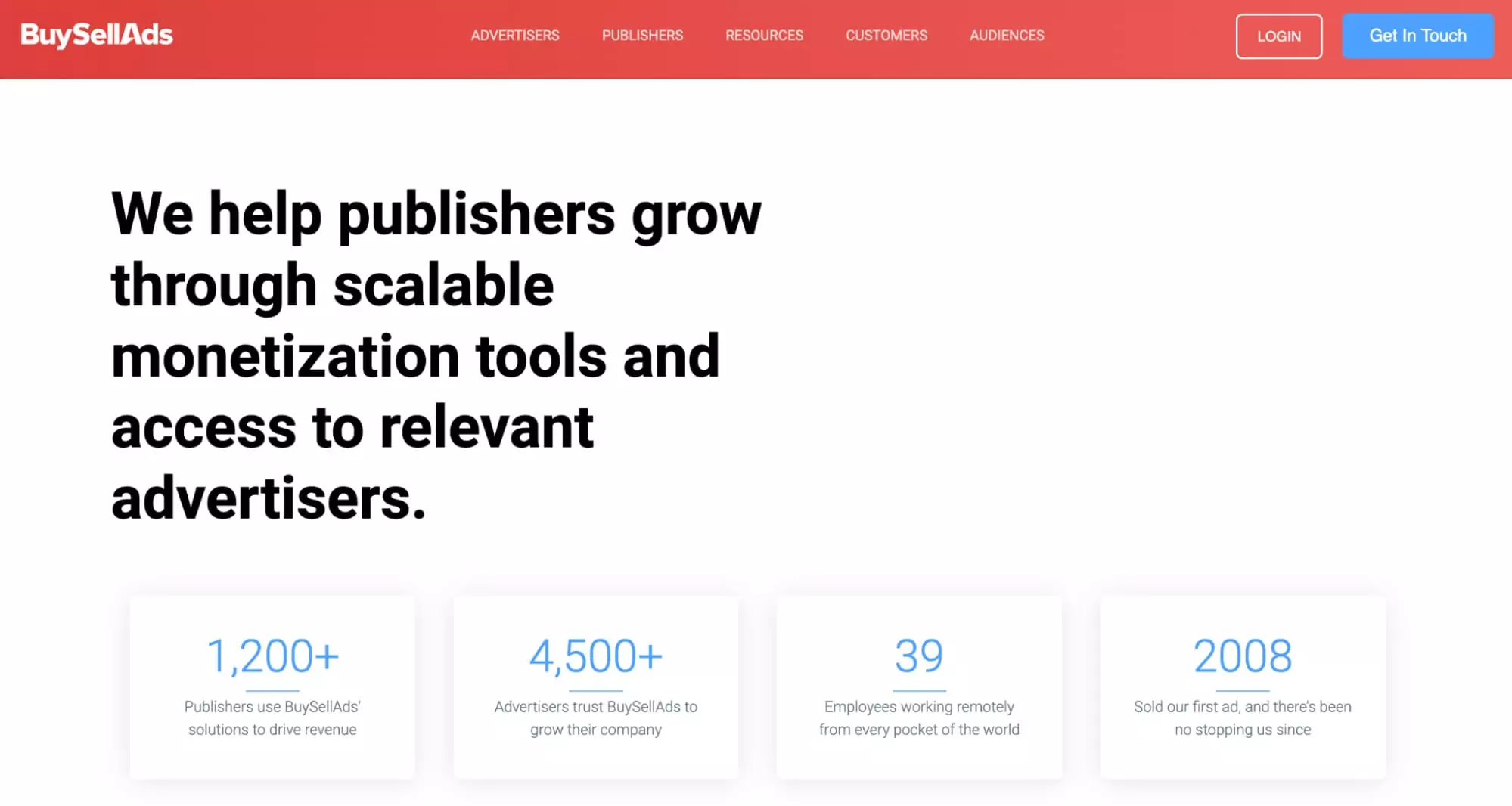
BuySellAds builds advertising solutions and one of the most reputable CPM ad networks for publishers and marketers. Publishers get profit through native performance networks, enterprise solutions, and the marketplace.
Core features
- Power to reject advertisements;
- No initial sign-up fee;
- Monetization ad formats including: Display advertising, native advertising, podcast, sponsored content, email;
- Payment methods: Wire transfer ($500 minimum), Paypal ($20 minimum), cheque ($50 minimum);
- Payment frequency: 2 withdrawals per month.
Adcash
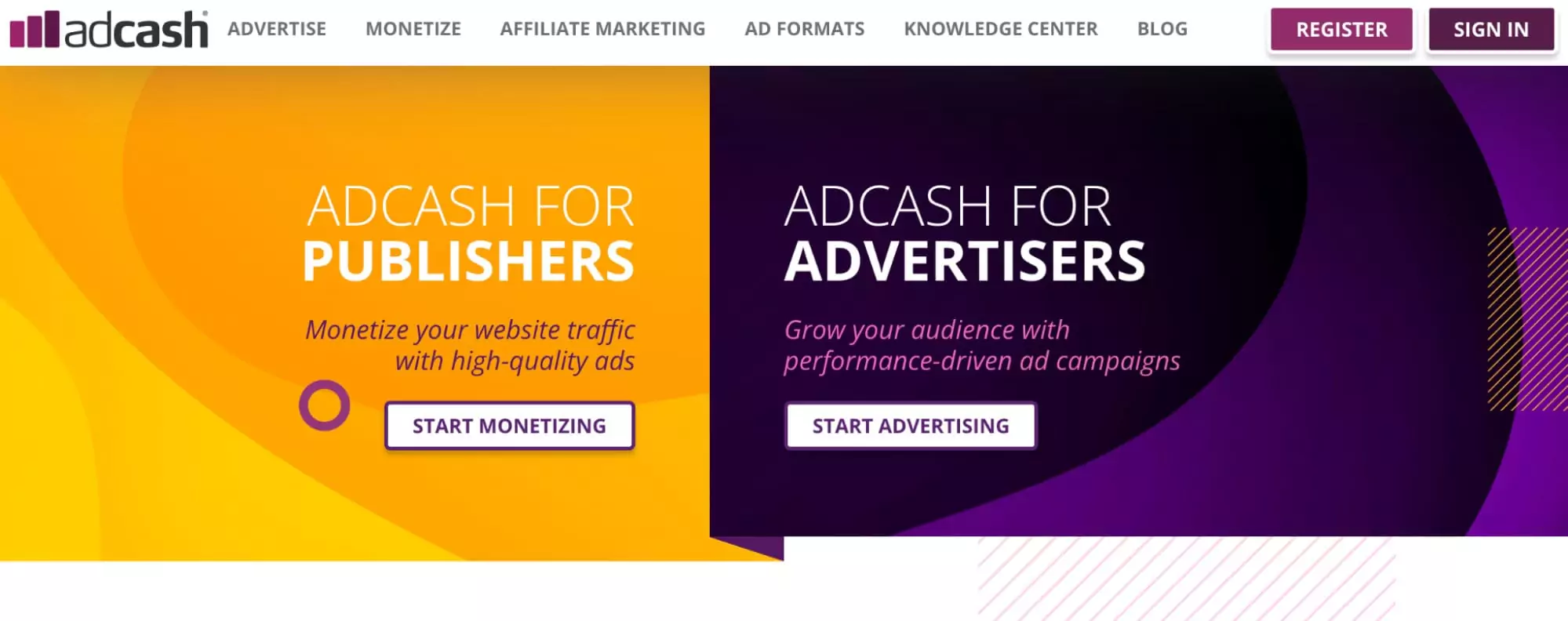
Adcash is another high-paying CPM ad network. It’s a global online platform for affiliates, media buyers, and website owners. This high-performance CPM network enables advertisers to reach a global audience and enables publishers to monetize their sites easily.
Core features
- No limit to the number of traffic to get approval;
- 21 verticals;
- Payment methods: Skrill, wire transfer, Webmoney, Bitcoin, and Payoneer;
- Minimum payment: 100 USD/EUR (Bank wire transfer), 5 USD/EUR (e.g.. for PayPal).
SmartyAds
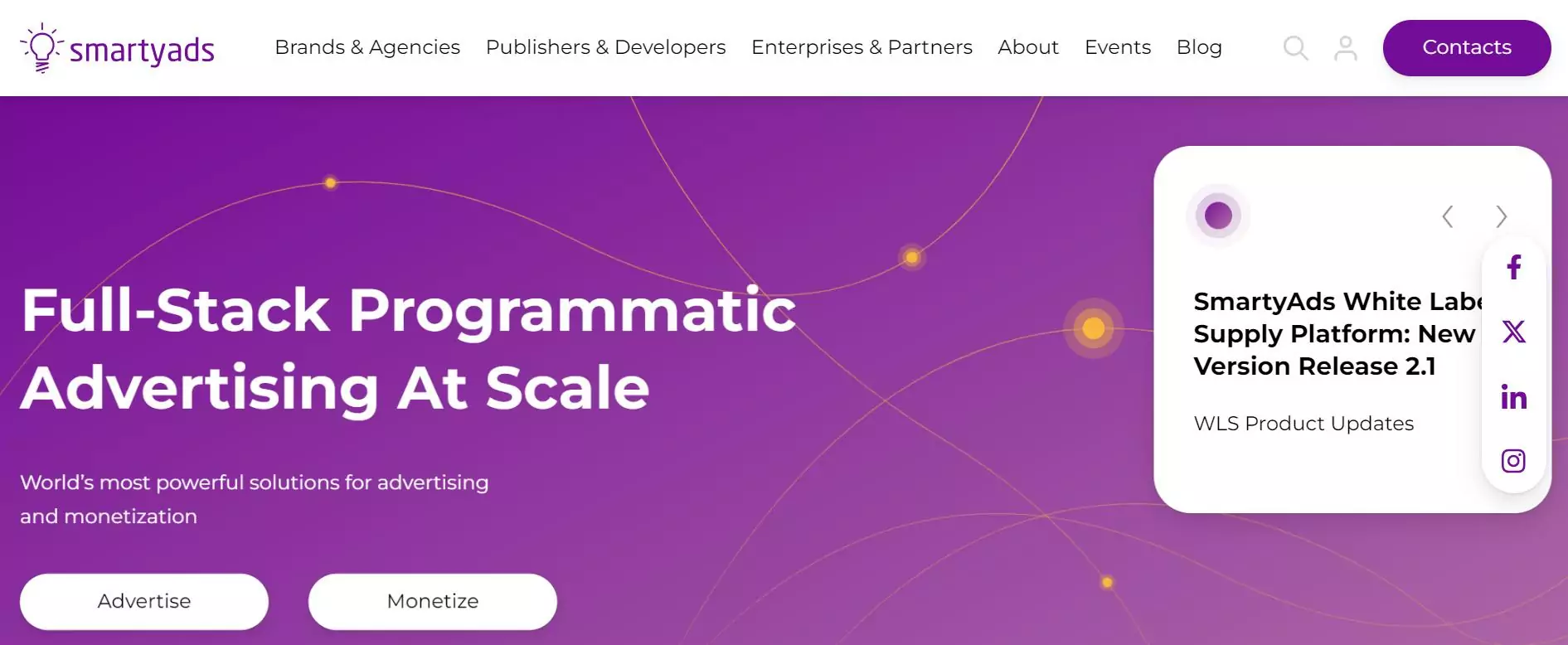
SmartyAds offers a broad range of monetization solutions to publishers. It is a programmatic network that curates ads from different networks and gives publishers access to them. With this wide net of advertisements, you can expect a 100% fill rate with ads relevant to your target audience. SmartyAds is one of the best-paying CPM networks.
Core features
- Minimum payout: $50;
- Payment terms: Net 60;
- Payment methods: PayPal and wire transfer;
- Ad formats: Banners, Interstitials, Native and Video.
ExoClick

ExoClick is another best CPM ad network for publishers in our list. Its property software offers 20+ different ad formats, behavioral retargeting, and optimizing targeting to improve ROI.
Core features
- No minimum traffic requirement;
- Payment frequency: Weekly and monthly payments;
- Monetization ad formats: Banners, popunder ads, sticky messages, and video slider;
- Payment methods: Wire transfer, cryptocurrency, Paxum.
Publift

Publift is one of the top CPM ad networks you should know about. Publift helps serve personalized ads that match your website audience. This platform offers programmatic ads to help publishers maximize their CPM earnings. It has an intuitive interface that’s easy to navigate.
Core features
- Minimum payout: $100;
- Payment terms: 30 days to 3 months;
- Payment methods: Bank transfer;
- Variety of ad formats including: Banners, Vignette, Sticky Footer and Sidebar.
Google AdSense

Google AdSense CPM ad network pays publishers well. At the same time, it may have stricter rules to qualify for website owners in many respects. You can start earning with your verified traffic and maximize revenue from there, using Google Ad Manager. You can use this network or other AdSense alternatives to monetize your websites with little hassle.
Core features
- Minimum payout: $100;
- Payment terms: Net 30;
- Payment methods: Wire and electronic funds transfer;
- Ad formats: Display and Video.
Media.net
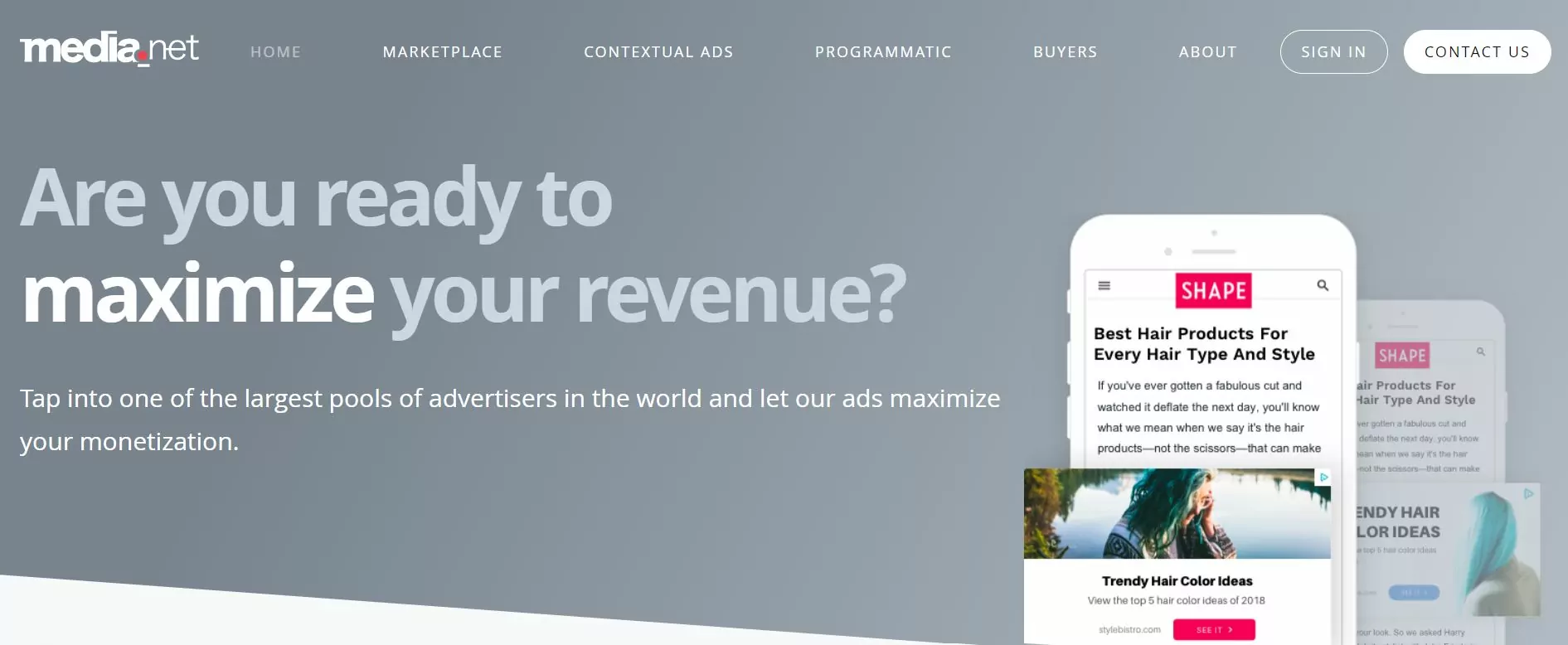
Media.net is a high CPM revenue network. It serves highly-targeted ads to a website’s audience to maximize revenue. This platform is notable for its high-paying Display and Native ads and is used by many leading online publishers. Media.net does not disclose minimum traffic requirements publicly, but the consensus is that you need at least 10,000 monthly page views to qualify.
Core features
- Minimum payout: $100;
- Payment terms: Net 30;
- Payment methods: PayPal or wire transfer;
- Ad formats: Display and Native ads.
15. Sovrn

Sovrn is a publisher solution and a versatile programmatic advertising platform trusted by creators and publishers. With 50K+ merchants and $3B annual gross merchandise value, Sovrn provides CPA/CPC programs, tools and an omnichannel pipeline of top-tier advertising demand.
Core features
- 1.5M+ Daily commerce clicks;
- 500M Daily active users;
- Minimum payout: $25, $50 (Wire transfer);
- Payment terms: Net 45-60;
- Payment methods: PayPal, Wire Transfer, eCheck / Local Transfer, ACH (Direct Deposit);
- Ad formats: Display Ads, Video Ads.
Benefits of ad networks that pay for impressions
Profitable in every way (for Publishers)
Direct publishers may find CPM incredibly lucrative, as they can earn money simply by placing ad codes on their websites. This approach is easier than making money with affiliate marketing and direct sales, when you are paid commissions only for purchases.
However, CPM rates aren’t as high as other models, so if you want to make money from your website via ad revenue generation, you’ll need a lot of web traffic or highly-demanded social traffic. There are also ways to capitalize on paid Facebook traffic that many Adsterra publishers use.
Cheaper brand awareness and recognition (for advertisers)
Some advertisers may conclude that setting up a CPM-based campaign is pointless because impressions aren’t as important as clicks, installations, and purchases. But that’s only partially true. Advertisers can buy the same traffic via CPA and CPC models, while publishers will be getting higher payouts if their traffic returns conversions (for CPA) and clicks (for CPC.)
CPM ads are an excellent way to build a strong following and raise brand awareness. Customers rarely patronize companies they’ve never heard of before, even after seeing well-created ads. Building brand awareness is a better strategy than focusing on conversions right away.
It’s also a good idea to use CPM to generate complex conversions like deposits or credit card submits. Earlier we shared guides on promoting e-commerce products.
Thus, you can see that the highest CPM ad networks come up with great opportunities for both publishers and advertisers.
Conclusion
There are various ad networks that pay for impressions. With a simpler flow or a more complex one. Unified ad marketplaces and multiple ad exchanges (like Google Ad Exchange) offer website owners advertising management and increased revenue.
If you want to find the best CPM network that understands your needs and can help you maximize revenue, also consider Adsterra. Our enhanced security, automated self-serve platform, top-tier support, innovative anti-AdBlock solution, and multiple payment options are all available for you. You will easily test several different ad placement options to figure out which ones bring in the passive income the most.
Best CPM ad networks for publishers: FAQ
Which CPM ad networks offer the highest revenue for small publishers?
Adsterra offers great CPM rates for small publishers. But this is not all. It has no entry threshold for how many views and visitors a publisher websites should have. Smaller publishers can enjoy all the opportunities and perks of a self-service platform, anti-AdBlocker feature, advanced ad formats with higher CTRs than industry alternatives, low minimum payout, and 24/7 live chat support.
How do CPM ad networks compare in terms of payout rates for publishers?
CPM payout rates vary widely: some premium networks like Ezoic or Mediavine can deliver higher CPMs ($5–$15+), while general networks like Adcash or Propeller Ads may offer lower but more accessible CPMs ($1–$8). Rates depend on niche, ad formats, and audience geography, so small publishers often balance higher CPM potential against entry requirements.
Where can I find CPM ad networks specialized in niche content monetization?
You can search lists of niche-oriented CPM ad networks with highest CPM on platforms like publisher blogs, ad tech review sites, or industry directories. You can also learn more about top advertising networks for publishers and advertisers. One good example is Adsterra. As a niche, highest CPM ad network, it provides flexibility and the quickest moderation so that publishers can get paid for their ad space at once.
